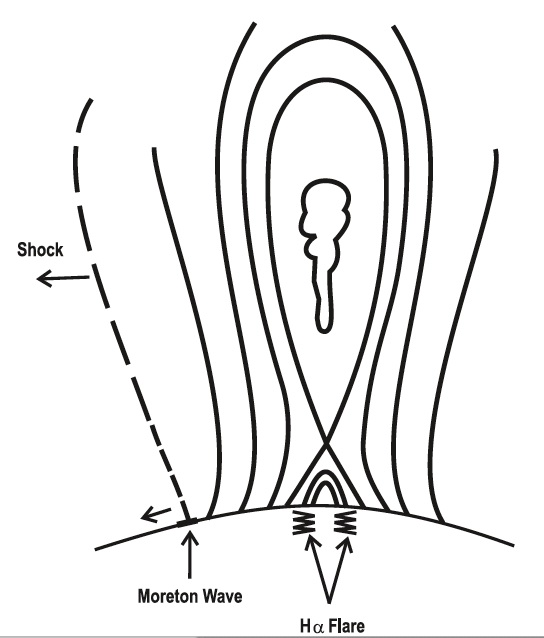
Balasubramaniam, K. S., E. W. Cliver, A. Pevtsov, M. Temmer, T. W. Henry, H. S. Hudson, S. Imada, A. G. Ling, R. L. Moore, N. Muhr, D. F. Neidig, G. J. D. Petrie, A. M. Veronig, B. Vršnak, and S. M. White, On the Origin of the Solar Moreton Wave of 2006 December 6, ApJ, 723, 587-601 (2010) (ADS)

(click on the image for a larger version)
Date: 2010 October 26
Update: 2019 November 19
The Moreton wave has always been one of the more fascinating aspects of a solar flare, and this paper describes a wonderful one. It is detected in chromospheric data, such as the Hα line. There are also bow waves driven by a CME, much like the Earth's bow shock. The cartoon - well, it is just avoids the big issue here: is a one-wave description adequate, or must one have two? If one, it would be the bow shock known to precede the CME ejecta; if two the other would be a simple wave propagating as an MHD fast-mode shock. If one-wavism triumphs (and the Archivist thinks the data are thus far ambiguous on this point), then the flanks of the bow wave would have to provide the energy for the Moreton wave, which (as this cartoon nicely shows) resides at the bottom of the corona (the chromosphere, to be more precise). It is only that topmost dash in the shock shown here that suggests two-wavism: if it did not curve over like that, it would be a better representation of a bow wave.
As a critique, this cartoon kind of misses the point about the interaction of the global wave with the chromosphere. Specifically the wave front must tilt at the bottom of the corona, since the propagation speed is lower in the corona. This distinction makes the "bobbing" motion of the associated winking filaments possible.